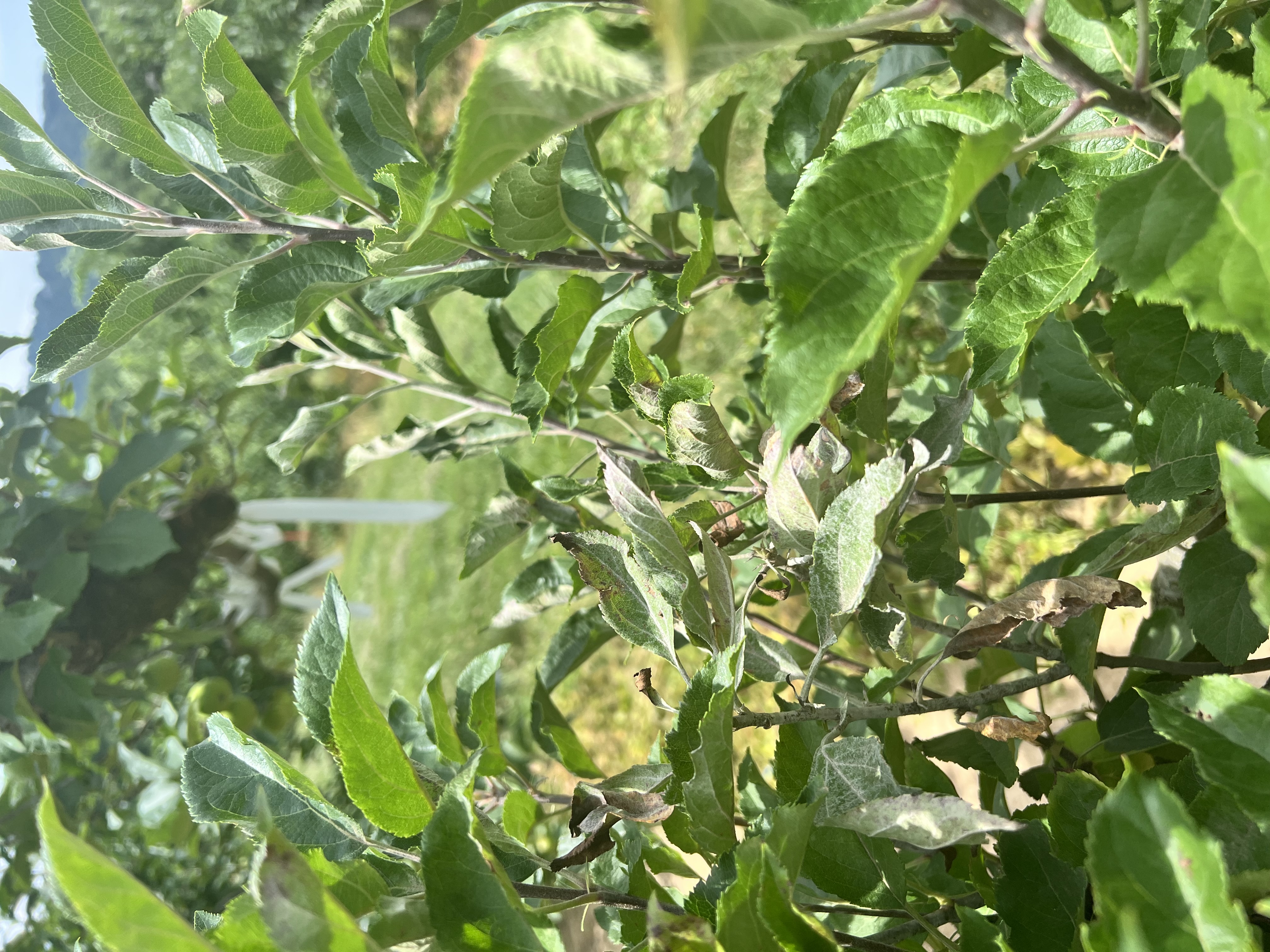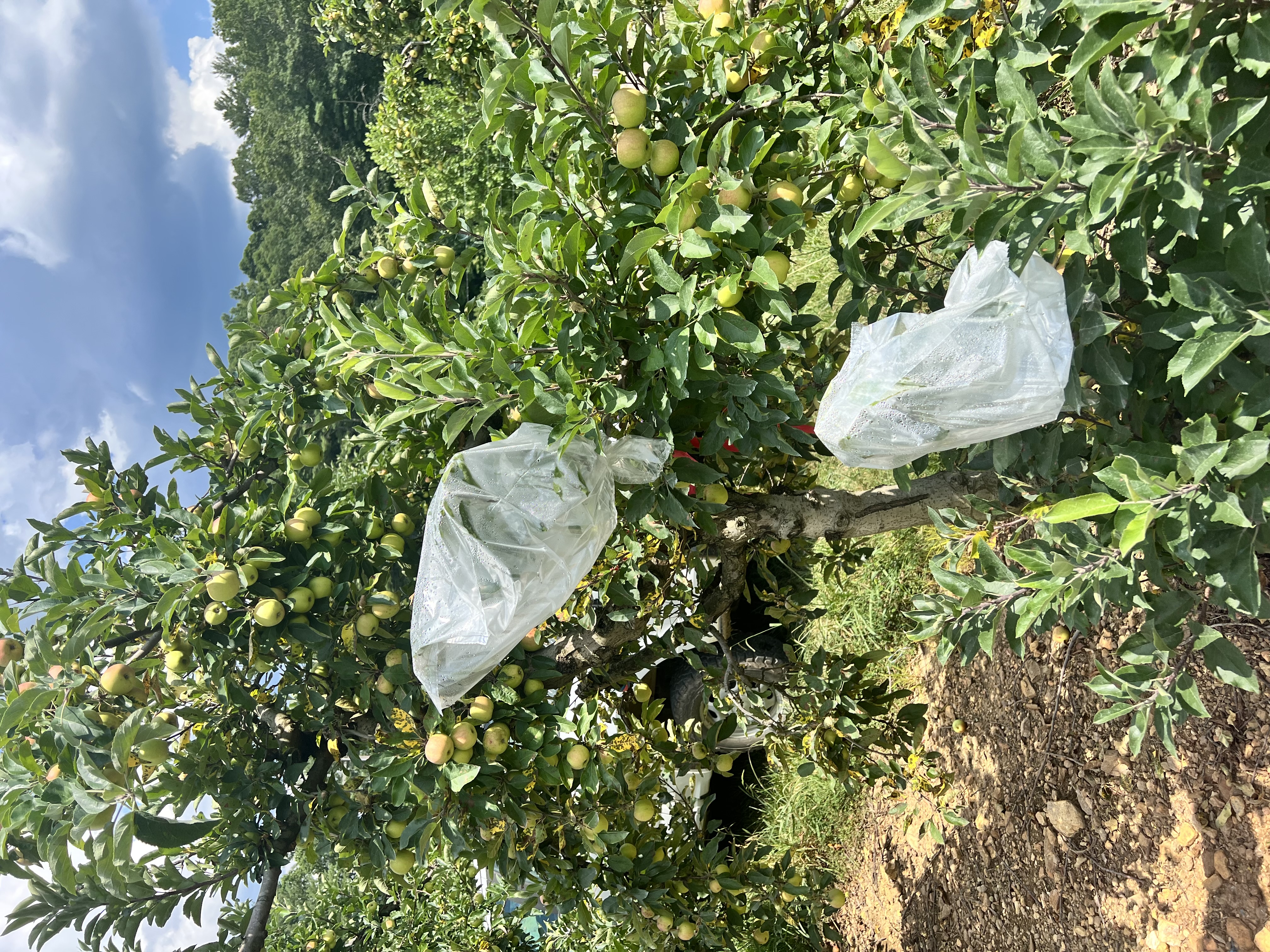Apple Disease Update: Week of July 17, 2022
go.ncsu.edu/readext?876184
en Español / em Português
El inglés es el idioma de control de esta página. En la medida en que haya algún conflicto entre la traducción al inglés y la traducción, el inglés prevalece.
Al hacer clic en el enlace de traducción se activa un servicio de traducción gratuito para convertir la página al español. Al igual que con cualquier traducción por Internet, la conversión no es sensible al contexto y puede que no traduzca el texto en su significado original. NC State Extension no garantiza la exactitud del texto traducido. Por favor, tenga en cuenta que algunas aplicaciones y/o servicios pueden no funcionar como se espera cuando se traducen.
Português
Inglês é o idioma de controle desta página. Na medida que haja algum conflito entre o texto original em Inglês e a tradução, o Inglês prevalece.
Ao clicar no link de tradução, um serviço gratuito de tradução será ativado para converter a página para o Português. Como em qualquer tradução pela internet, a conversão não é sensivel ao contexto e pode não ocorrer a tradução para o significado orginal. O serviço de Extensão da Carolina do Norte (NC State Extension) não garante a exatidão do texto traduzido. Por favor, observe que algumas funções ou serviços podem não funcionar como esperado após a tradução.
English
English is the controlling language of this page. To the extent there is any conflict between the English text and the translation, English controls.
Clicking on the translation link activates a free translation service to convert the page to Spanish. As with any Internet translation, the conversion is not context-sensitive and may not translate the text to its original meaning. NC State Extension does not guarantee the accuracy of the translated text. Please note that some applications and/or services may not function as expected when translated.
Collapse ▲Before I get into the disease updates for the week, just a reminder to register for the 2022 Apple Field Day, which will be held on Thursday, July 28 beginning at 4 p.m.! It’s free, and if we get enough sponsors we may actually feed you something other than a disease apple from one of my research orchards…….
At this point in the season, you’ve likely got a solid program of captan, ziram, ProPhyt, and/or a strobilurin such as Merivon or Luna Sensation working for you. Most growers I’ve spoken with have been doing a great job of tightening those spray intervals and it’s my hope this rainy weather begins to calm itself. For summer rot (e.g. bitter rot, black rot) and GLS, if you’ve applied a strobilurin (FRAC 11) 2 or fewer times this season, I’d consider the following: Captan (1/2 rate) + Merivon (5.5 fl oz) OR Ziram (3-4 lbs/A) + Merivon (5.5 fl oz/A) + a sticker such as Bond Max. If there’s been strobilurin resistance confirmed in your orchard I’d choose captan over the ziram option, or simply mix all three fungicides. The Merivon also has excellent efficacy against flyspeck/sooty blotch.
Remember, for resistance management guidelines, you should only be applying four TOTAL applications of any strobilurin fungicide a year. That means: 2 Luna Sensation + 2 Merivon = 4 strobilurin applications. I cannot stress enough the importance of this fungicide class for bitter rot and GLS management in the S.E. and it won’t be doing you or the S.E. apple industry much good if you abuse it then lose it. I maintain my argument that you should save at least one application of Merivon or Pristine until right before harvest (e.g. one to two days before harvest). Thus, if you’ve already applied 3 apps of a strobilurin consider captan at (1/2 to 3/4 max rate) and consider adding Aprovia, as it is our most efficacious SDHI fungicide against bitter rot and GLS and is more rainfast than captan. At the very least you’ll have some residual protection if we get a few storms until you can get back out on the sprayer.
Last week my program also initiated a captan residue study, with the end goal of hopefully being able to model captan residues under different environmental conditions and different spray water/tank mix conditions, to help you better time captan applications throughout the summer. For this year, our plan is to do a time course study (21 days) with different rates of captan, different spray water pH, and different adjuvants. We also bagged shoots (see above) so prevent captan from reaching some leaves so that we could do a redistribution study as well. We will presenting this experiment in more detail on Apple Field Day but just as a primer, here’s a look at the high rate of Captan 4L (4 qt/A) vs. the bagged shoots about 4 hours after spraying:
Lastly today, I just wanted to remind you that powdery mildew throughout the region is relatively ugly this year. Some cultivars, such as ‘Gala’ in our Glomerella research orchard are still pushing out new growth and remember, this young, succulent foliage is highly susceptible to mildew.  Although powdery mildew may not be the most directly detrimental to apple fruit (although they can cause russeting on fruit), it can impact tree photosynthetic capacity and may compromise fruit quality. Captan and Ziram have little to no efficacy against this disease so when you do not have a strobilurin in the tank this summer consider adding an older DMI chemistry such as Rally or Procure, or a PM specific product such as Gatten. I’d suggest adding something to the tank mix every other spray as long as you have new growth emerging. Sulfur is another option, but I’d avoid applying it on any days over 85 F, and if you have any type of oil-based product in the tank. Phytotoxicity and russetting may be fairly severe in these instances.
Although powdery mildew may not be the most directly detrimental to apple fruit (although they can cause russeting on fruit), it can impact tree photosynthetic capacity and may compromise fruit quality. Captan and Ziram have little to no efficacy against this disease so when you do not have a strobilurin in the tank this summer consider adding an older DMI chemistry such as Rally or Procure, or a PM specific product such as Gatten. I’d suggest adding something to the tank mix every other spray as long as you have new growth emerging. Sulfur is another option, but I’d avoid applying it on any days over 85 F, and if you have any type of oil-based product in the tank. Phytotoxicity and russetting may be fairly severe in these instances.




